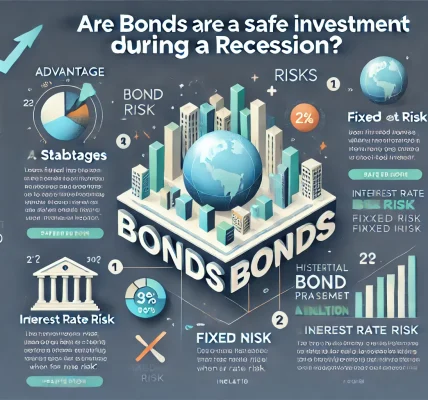Tax-free bonds are a popular investment option for individuals seeking steady income while minimizing tax liabilities. These bonds offer interest income exempt from federal or state taxes, making them attractive to high-income earners and tax-conscious investors. However, like any investment, tax-free bonds come with both benefits and risks that investors should carefully consider.
In this guide, we will explore the advantages and drawbacks of tax-free bonds, the types available, and how to invest in them while ensuring compliance with legal and regulatory frameworks.
What Are Tax-Free Bonds?
Tax-free bonds are debt instruments issued by government or municipal bodies to raise capital for public projects like infrastructure development, schools, and hospitals. The key appeal of these bonds lies in their tax exemption on the interest earned, which can provide substantial tax savings for investors in higher tax brackets.
Types of Tax-Free Bonds
- Municipal Bonds (Munis): Issued by state and local governments, these are the most common form of tax-free bonds in the United States. Interest from municipal bonds is generally exempt from federal income tax and, in some cases, state and local taxes if the investor resides in the issuing state.
- Infrastructure Bonds: Typically issued by government entities to fund public infrastructure projects. Some of these bonds offer tax exemptions to attract investors.
- Zero-Coupon Municipal Bonds: These bonds do not pay periodic interest but are issued at a discount and redeemed at face value upon maturity. The implied interest is tax-free.
Benefits of Tax-Free Bonds
- Tax Savings: The primary advantage is the exemption from federal and, in many cases, state and local income taxes, resulting in higher net returns.
- Stable Income: Regular interest payments provide a predictable income stream, making them ideal for retirees and conservative investors.
- Low Risk: Issued by government-backed entities, these bonds are generally considered low-risk investments compared to corporate bonds.
- Portfolio Diversification: Including tax-free bonds in an investment portfolio can reduce overall risk and provide a hedge against stock market volatility.
- Social Impact: Investors contribute to public welfare projects, such as schools, hospitals, and infrastructure, promoting community development.
Risks Associated with Tax-Free Bonds
- Interest Rate Risk: When interest rates rise, the market value of existing bonds typically falls, which can lead to capital losses if the bonds are sold before maturity.
- Credit Risk: While government-issued bonds are generally safe, there is a risk that local municipalities may face financial challenges and default on payments.
- Inflation Risk: Fixed interest payments may lose purchasing power over time if inflation rises.
- Liquidity Risk: Some tax-free bonds may have limited secondary market trading, making it challenging to sell them before maturity without a price discount.
- Call Risk: Certain municipal bonds are callable, meaning the issuer can redeem them before maturity, potentially reducing expected interest income.
How to Invest in Tax-Free Bonds
1. Direct Purchase
Investors can buy tax-free bonds directly from the primary market when the bonds are issued or from the secondary market through brokerage firms.
2. Municipal Bond Funds
These are mutual funds that invest in a diversified portfolio of municipal bonds. They provide professional management, liquidity, and convenience but come with management fees.
3. Exchange-Traded Funds (ETFs)
Tax-free bond ETFs track an index of municipal bonds, offering diversification and liquidity. They are traded on stock exchanges like regular shares.
4. Bond Ladders
Creating a bond ladder involves purchasing bonds with staggered maturities. This strategy provides regular income while mitigating interest rate risks.
Evaluating Tax-Free Bonds Before Investing
- Credit Rating: Assess the creditworthiness of the issuer by reviewing ratings from agencies like Moody’s, S&P, and Fitch. Higher-rated bonds are safer but may offer lower yields.
- Yield to Maturity (YTM): This measures the total return an investor will earn if the bond is held until maturity, accounting for the purchase price and periodic interest payments.
- Tax-Equivalent Yield (TEY): Compare the return of tax-free bonds with taxable bonds. TEY is calculated using the formula:TEY = Tax-Free Yield / (1 – Tax Rate)
- Issuer’s Financial Health: Analyze the financial stability of the municipality or government body issuing the bond.
Tax and Legal Considerations
- Tax Reporting: While the interest is tax-free, investors must report the income on their tax returns.
- Alternative Minimum Tax (AMT): Some private activity bonds may be subject to AMT, reducing the tax-free advantage for high-income investors.
- Estate Planning: Tax-free bonds can be part of a tax-efficient estate planning strategy, passing on tax-advantaged income to heirs.
- Legal Compliance: Ensure the bonds you invest in comply with the regulations set by the Securities and Exchange Commission (SEC) and municipal regulatory authorities.
Who Should Invest in Tax-Free Bonds?
- High-Income Earners: Those in higher tax brackets benefit the most due to greater tax savings.
- Retirees: Seeking a stable, predictable income stream with minimal risk.
- Conservative Investors: Looking to preserve capital while earning tax-free returns.
- Tax-Conscious Investors: Wanting to reduce taxable income while maintaining a diversified portfolio.
Conclusion
Tax-free bonds offer a compelling investment option for individuals seeking safe, tax-efficient returns. While they provide significant tax benefits and a steady income stream, it’s essential to evaluate the associated risks, credit quality, and market conditions before investing.
By understanding the nuances of tax-free bonds and implementing strategic investment approaches, you can optimize returns while ensuring compliance with legal regulations. Always consult a financial advisor to tailor your bond investments to your specific financial goals and risk tolerance.




